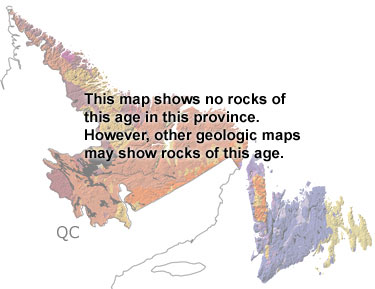

The Devonian in Newfoundland and Labrador, Canada |
|||||||||||||||||||||||||||||||||||||||||||||||||||||||||||
|
|||||||||||||||||||||||||||||||||||||||||||||||||||||||||||
Paleontology and geologyLabrador was above sea level at this time, and erosion continued to be the dominant force shaping the landscape. There is no record of Devonian rocks on the peninsula. In the Early Devonian, Avalonia finished colliding with Laurentia, adding the Avalon Peninsula to Newfoundland. This collision generated substantial heat and pressure, folding and faulting older rocks and forcing magma up near the surface. The magma melted some of the rocks underneath, which then cooled to form granite and other igneous rocks. Most of these rocks are still below the surface, but a few exposures can be seen in central Newfoundland. After all the collisions, much of Newfoundland was above sea level, and the island formed the northern end of the Appalachian Mountains. In between the highlands, there were narrow valleys, some of which were open to the sea. Sandstones and siltstones deposited in one of these shallow marine environments are found in western Newfoundland, and they contain abundant microfossils, including conodonts, acritarchs, and scolecodonts (jaws from marine worms). Plant fragments and terrestrial spores from these rocks indicate that vegetation had developed along the coast by this time. The Devonian rocks may appear as undifferentiated rocks on this and other maps. |
|||||||||||||||||||||||||||||||||||||||||||||||||||||||||||
|
|
|||||||||||||||||||||||||||||||||||||||||||||||||||||||||||
|
site tour |
about the site |
site map |
site credits |
page credits |
help |
FAQs |
contact |
||


